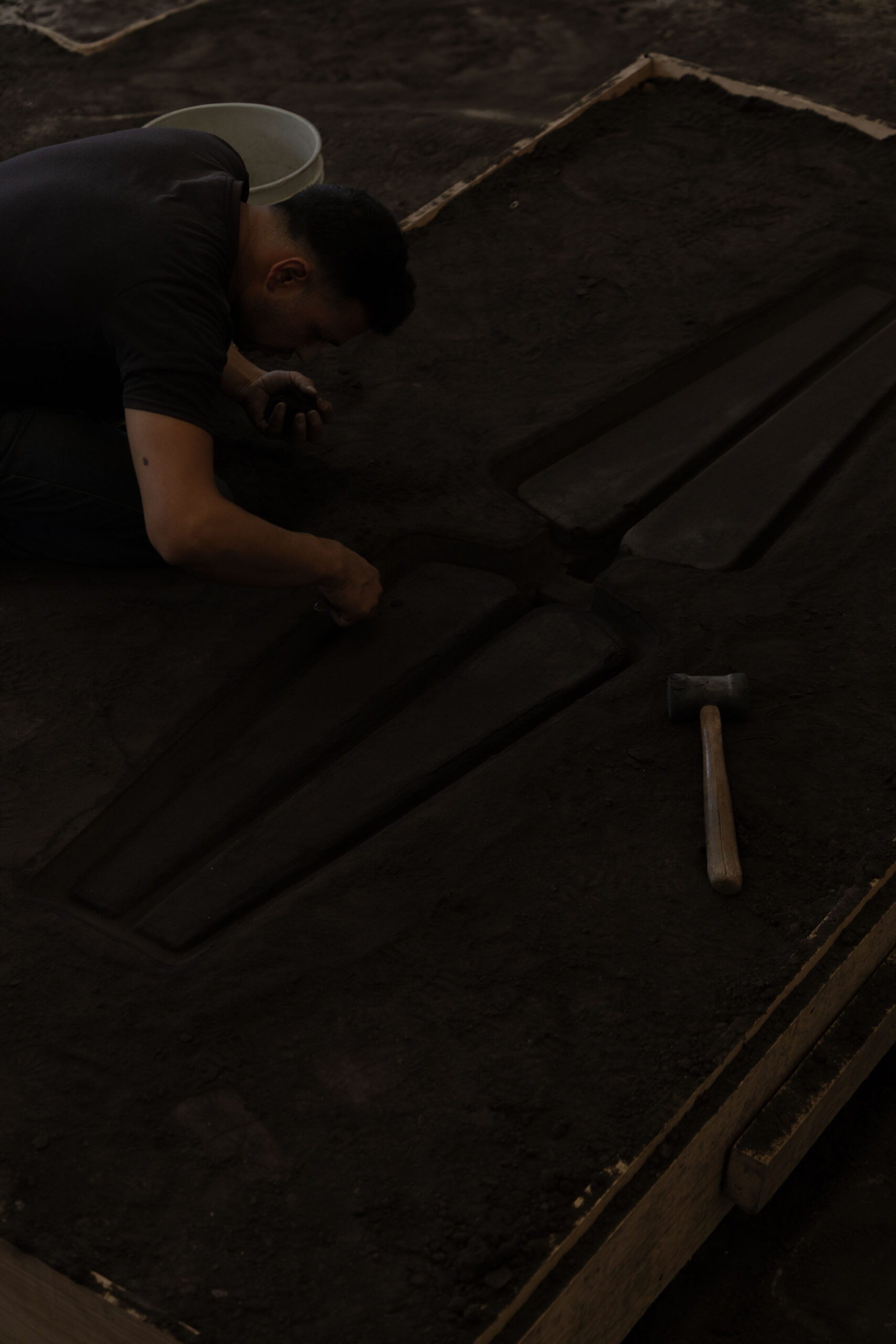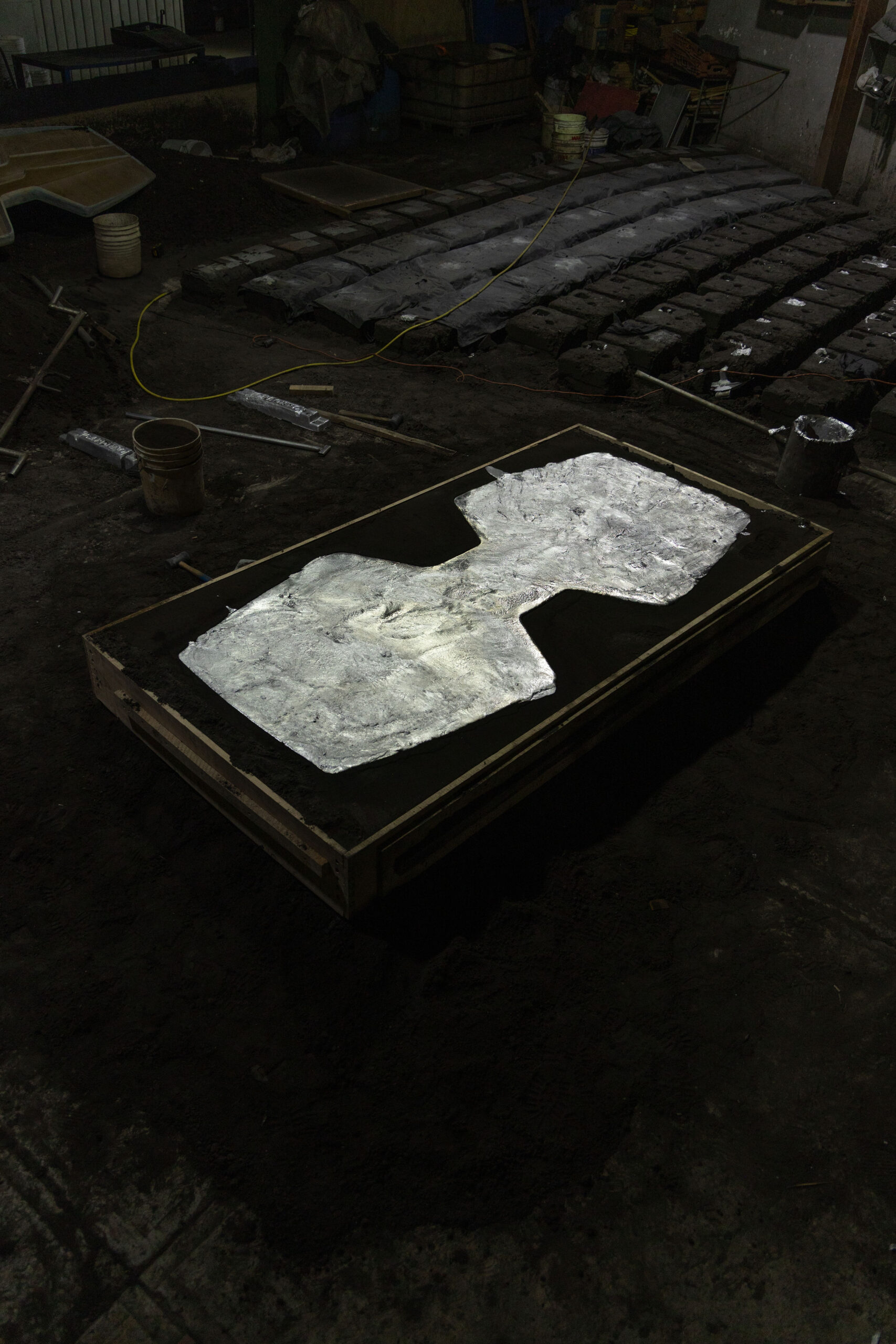

The Exhuma Collection is EWE Studio newest collection, a tribute to pre-Hispanic innovative techniques and Purépecha metallurgy.
Mexican metalworking carries ancestral knowledge and practices that have been passed down through generations. The use of molds in the creation of jewelry, ornaments, and weapons has been present since the Purépechas mastered mining and metal alloys. This practice was likely inherited from South American traditions and transmitted through trade routes that brought Andean influences to Mexico.
EWE’s collection consists of a console, a coffee table, and a mirror, with the cast metal surfaces produced in sand molds. The bases of these pieces are made of volcanic stone, a material widely used in Purépecha architecture and artifacts—not only for pyramids, yácatas (ancient, stepped pyramidal structures built by the Purépecha civilization in western Mexico), and plazas but also for tools, weapons, mills, ceremonial objects, figurines, and sacred symbols.
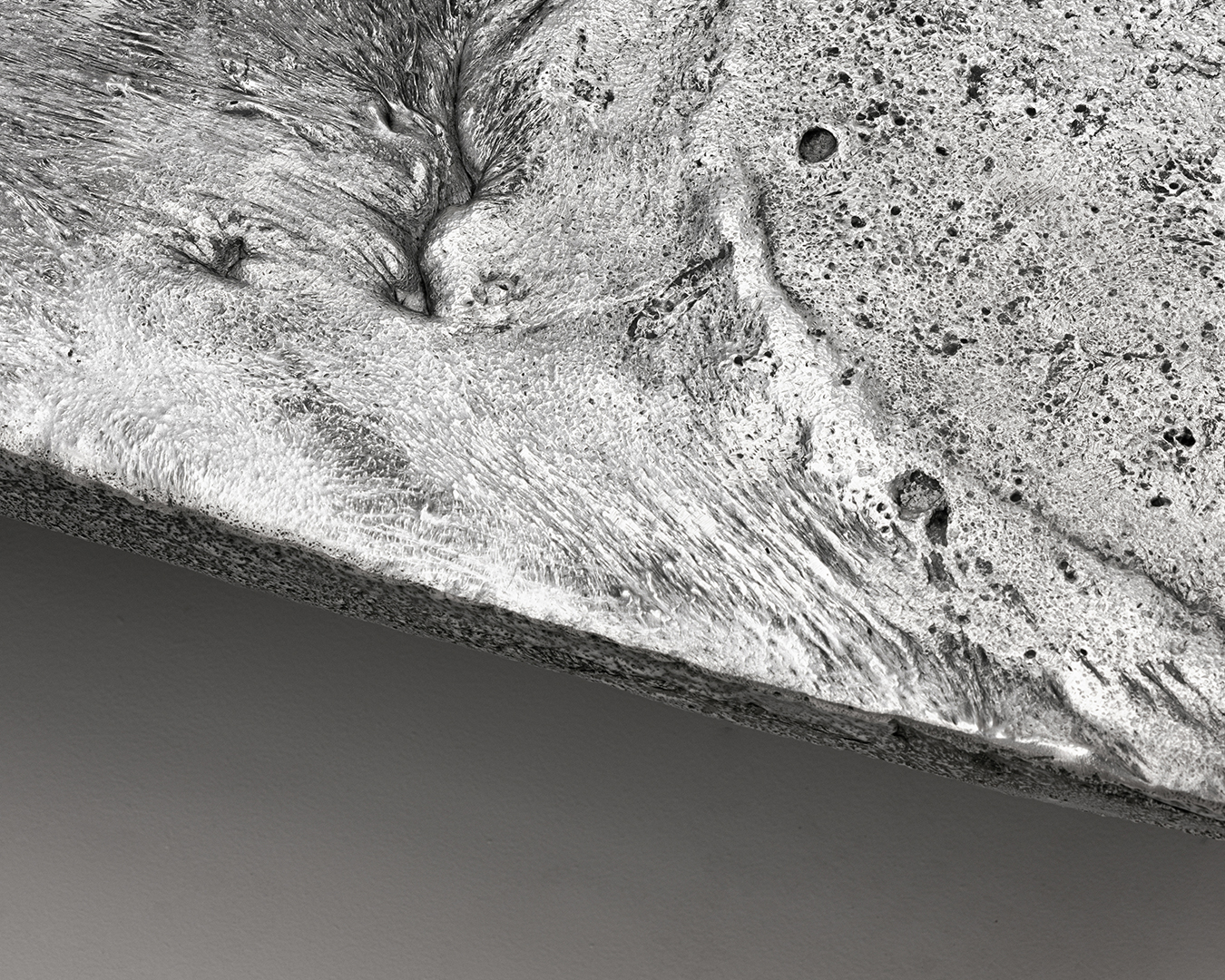

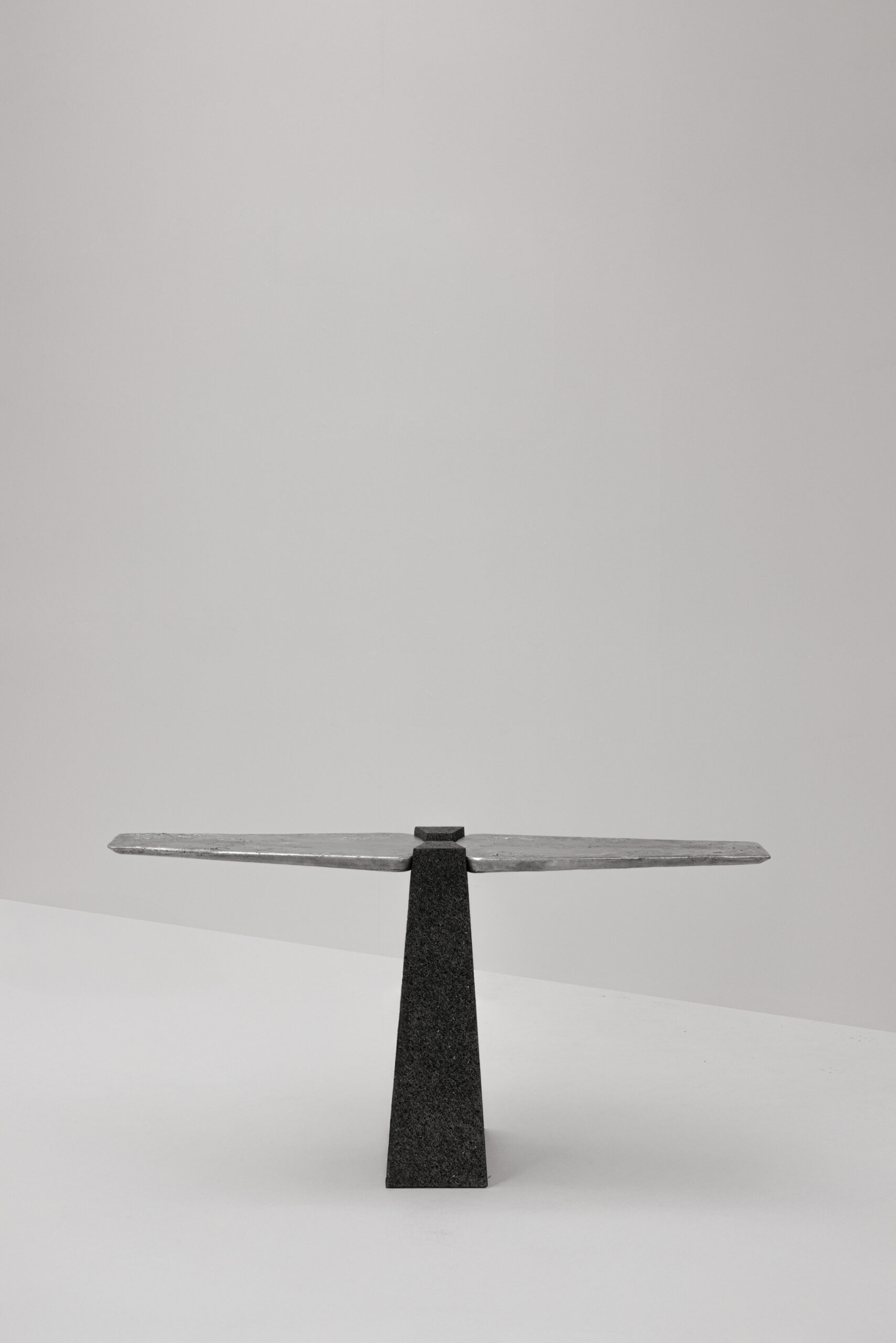
The console is crafted through the fusion of cast metal and carved volcanic stone. The top, molded in sand and refined by hand, balances on a solid volcanic stone base. Inspired by Purépecha jewelry and ritual objects, the console combines functionality with artisanal legacy.
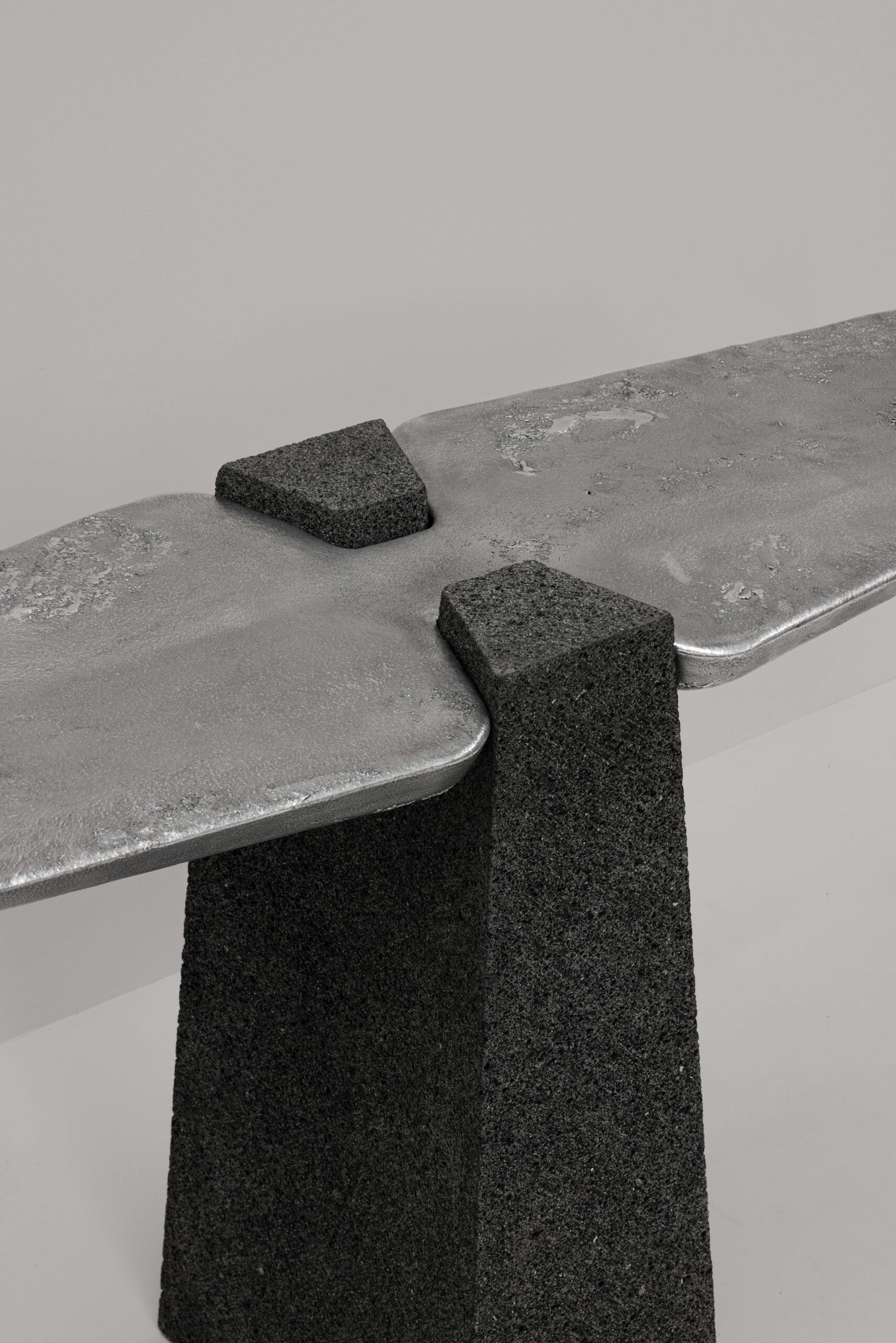
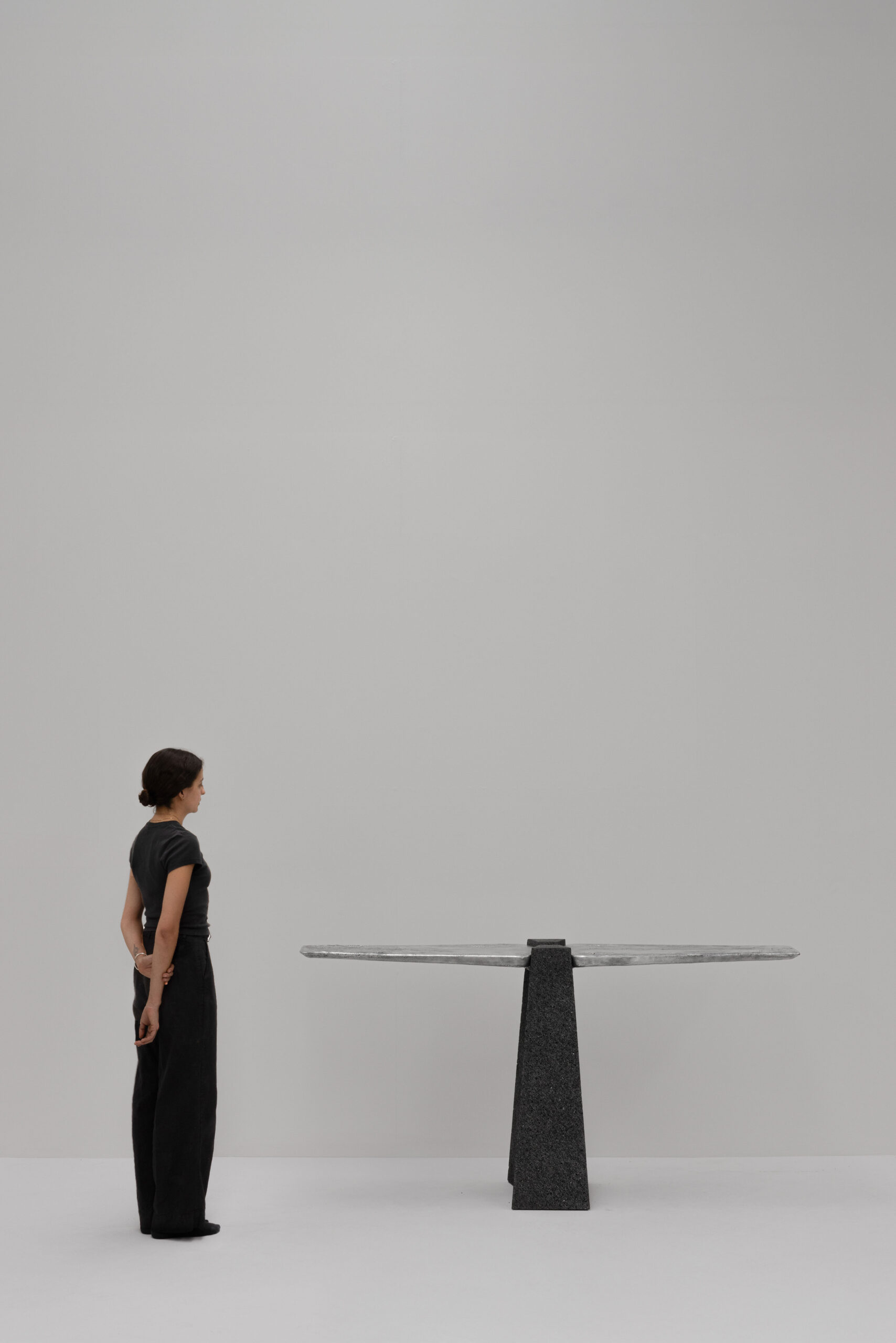
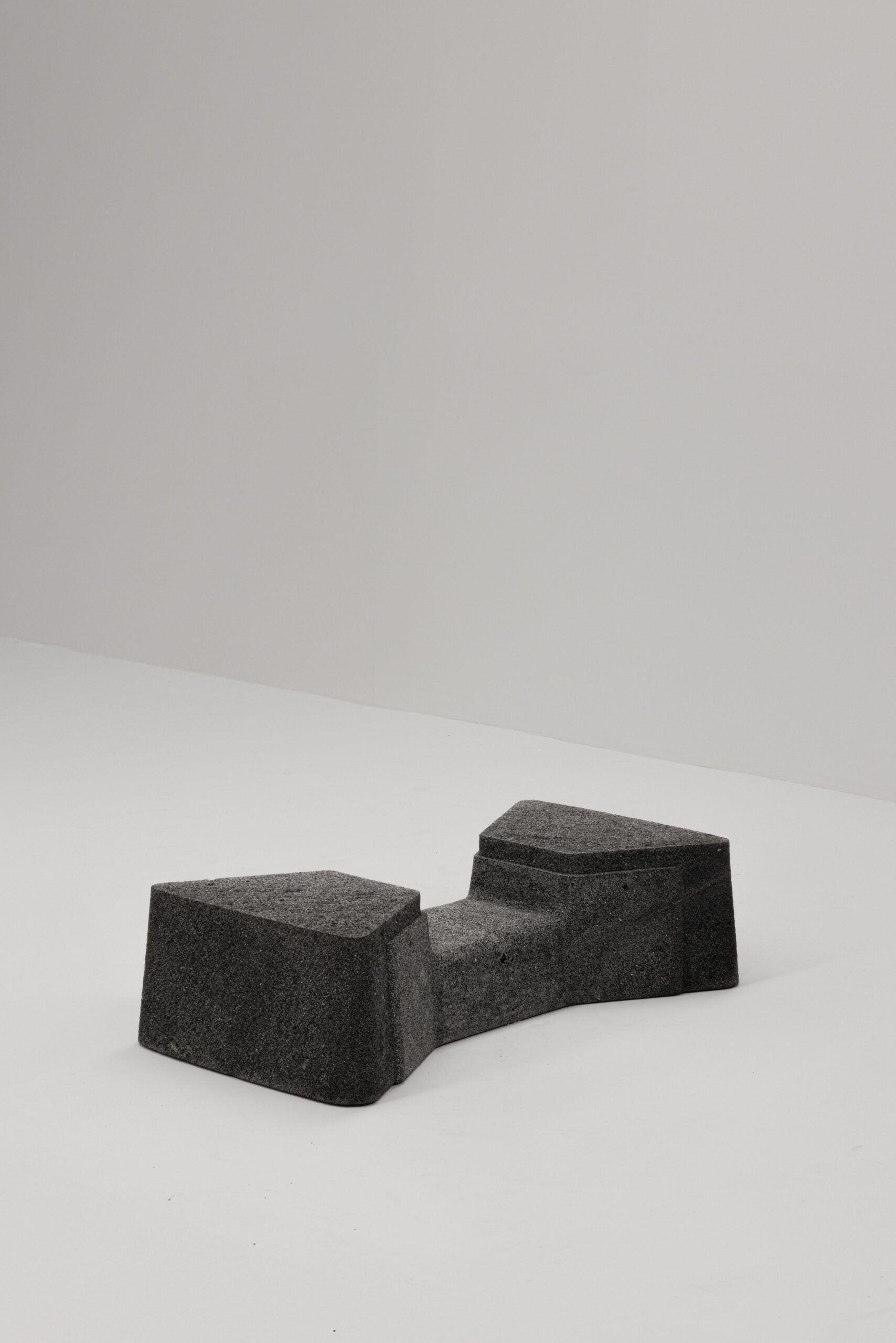

The coffee table plays with the balance between the pristine surface of cast metal and the raw texture of volcanic stone. Resting firmly on its carved stone base, the piece alludes to sacred pre-Hispanic objects through its intricate assembly
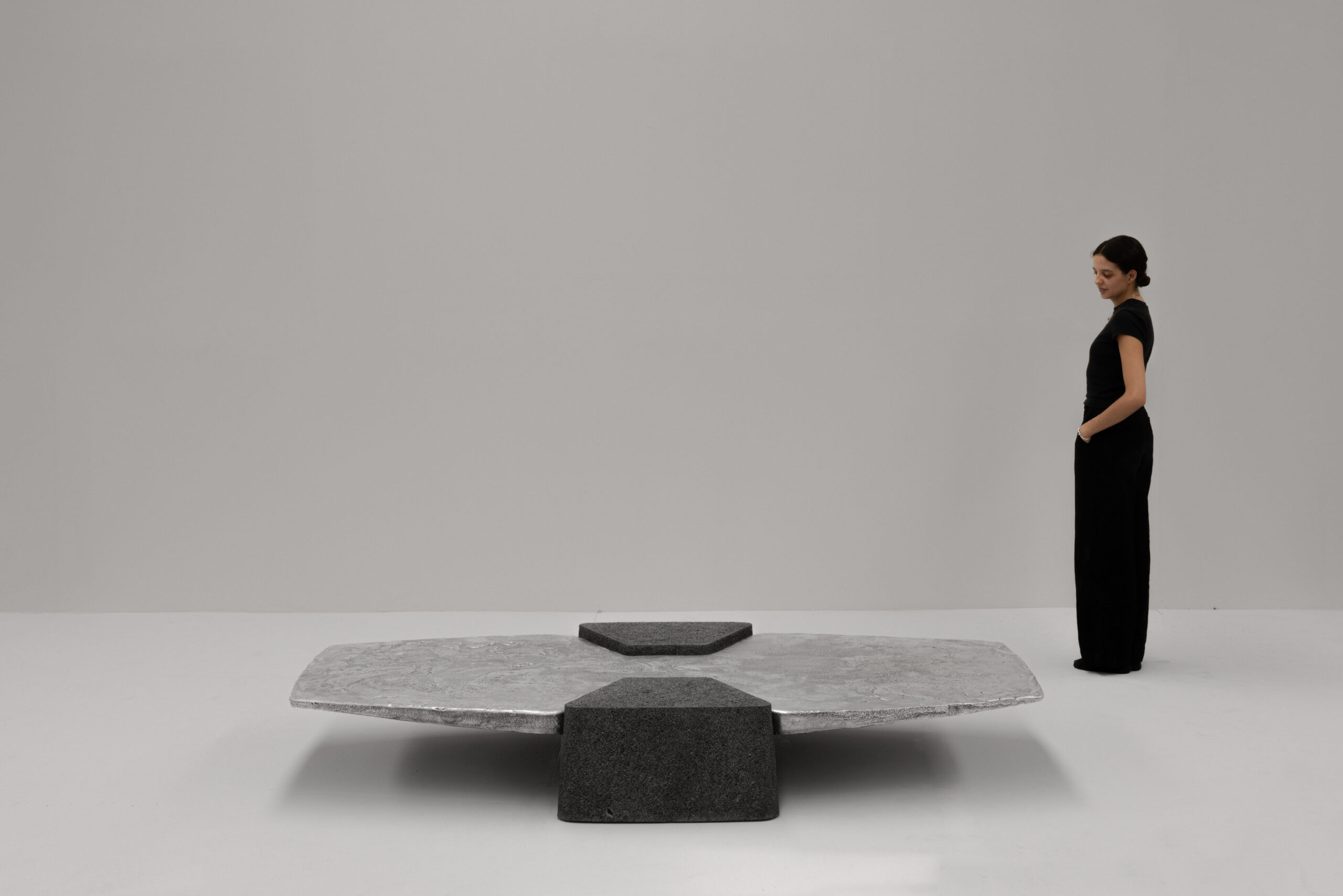
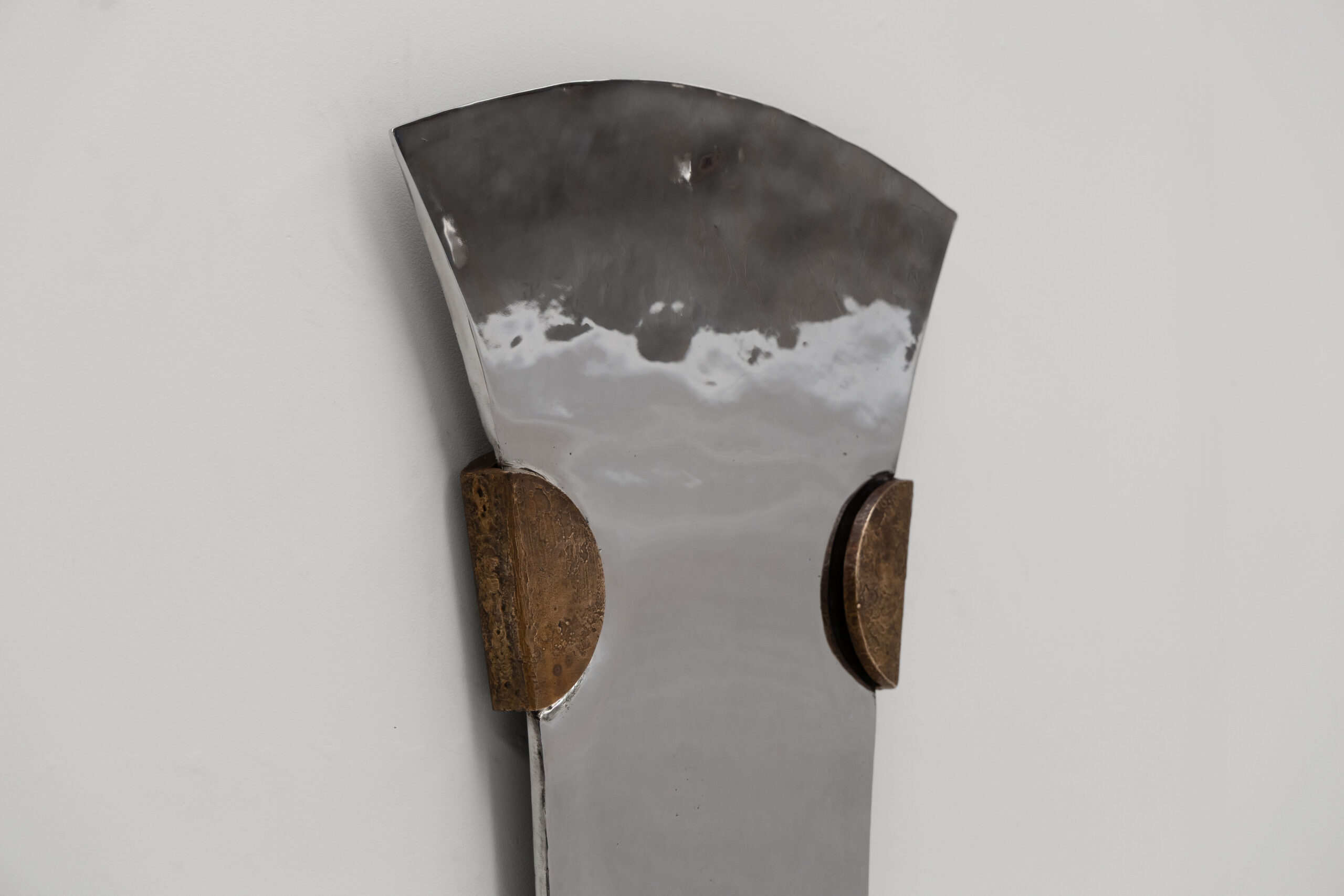
The mirror in the collection is inspired by tajaderos—Purépecha objects that were simultaneously ornamental, valuable, and symbolic. Its production follows the same process as its counterparts in the collection: molten metal is poured into pre-sculpted molds and polished once solidified.
In pre-Hispanic cultures, mirrors were more than functional objects—they were portals to the divine, believed to be gateways to other realms and instruments of spiritual transformation. Both artisanal and symbolic, the process and research behind the mirrors are essential to their final form, in which the legacy of pre-Hispanic craftsmanship and cosmology is reflected.
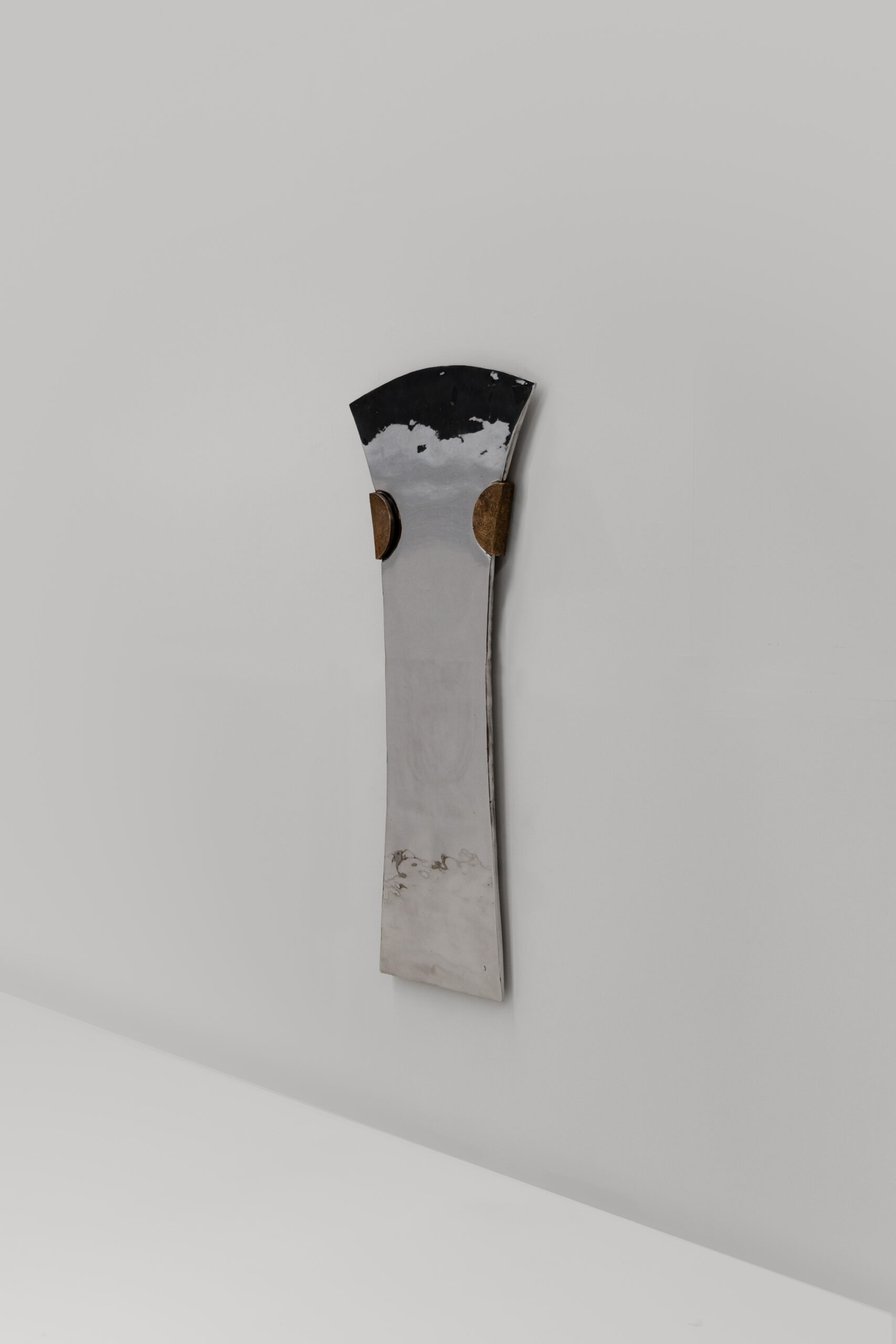
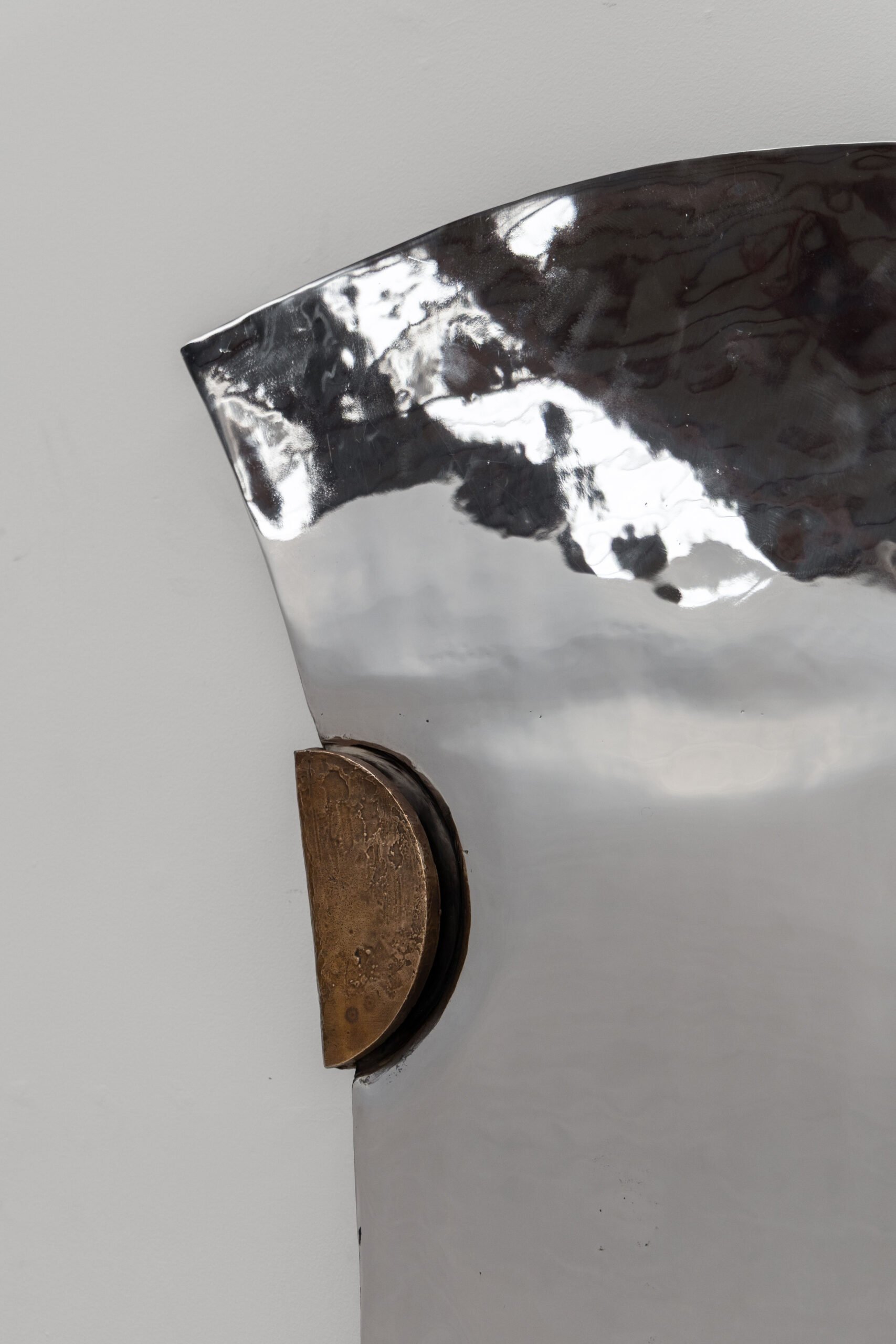
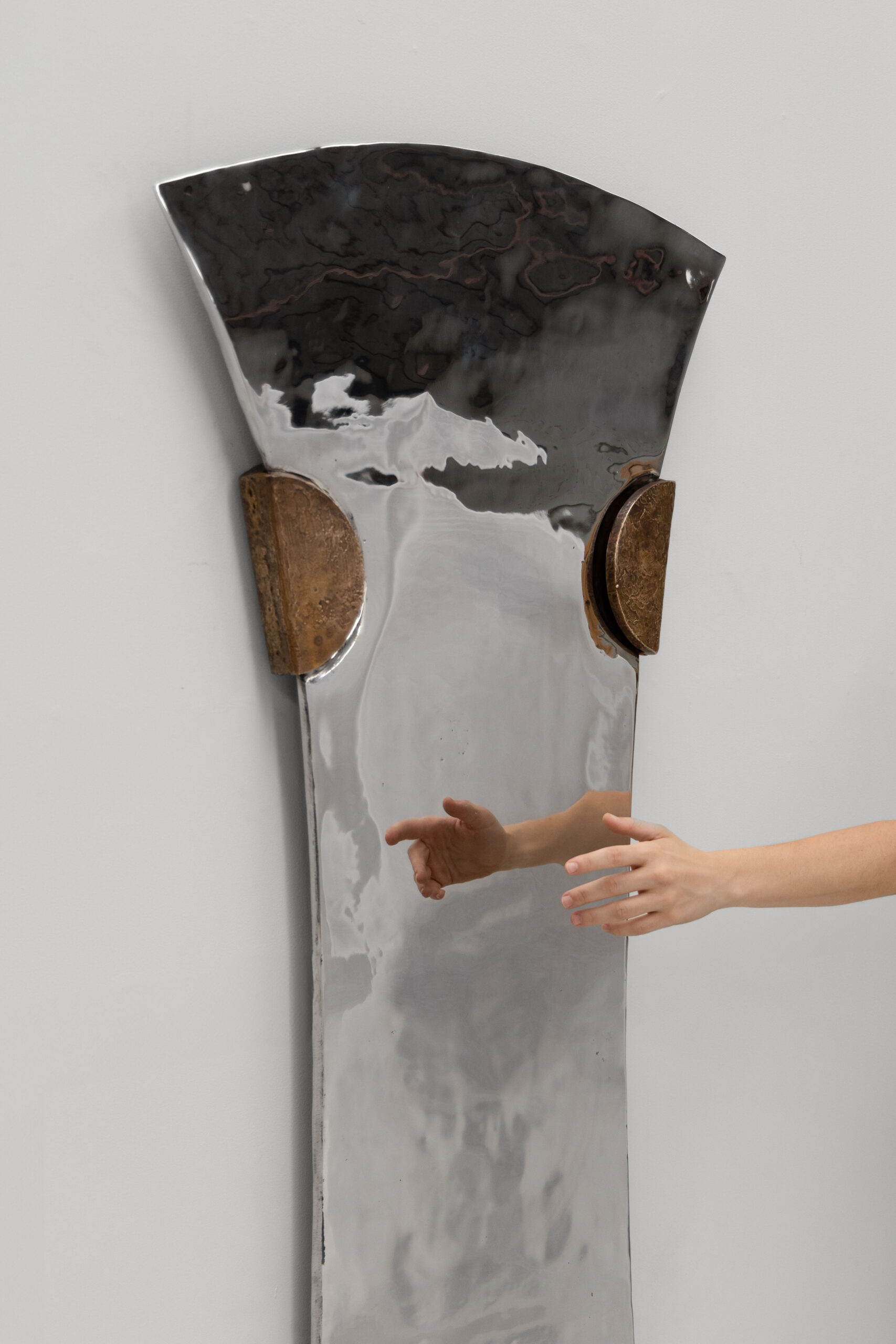
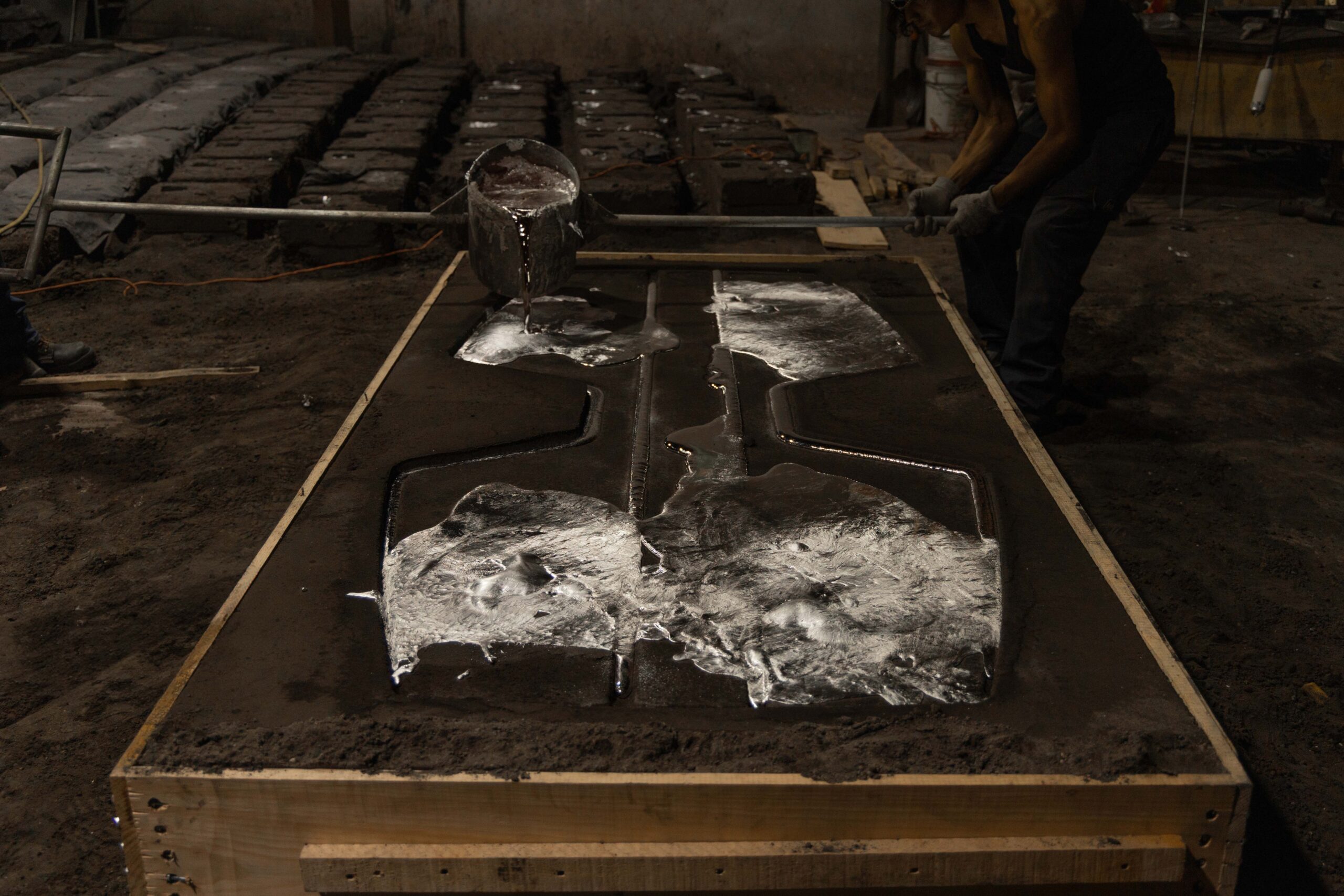
The technique used to develop this collection is an adaptation of the casting methods employed by the Purépechas around 1450 AD. Metal was melted and poured in its liquid form into molds made of clay, sand, charcoal, or stone. Furnace heat was maintained and increased by blowing through long tubes, and the molten metal was poured into molds placed on hot ashes. Once solidified, the object was extracted by breaking the mold and then polished using stones.
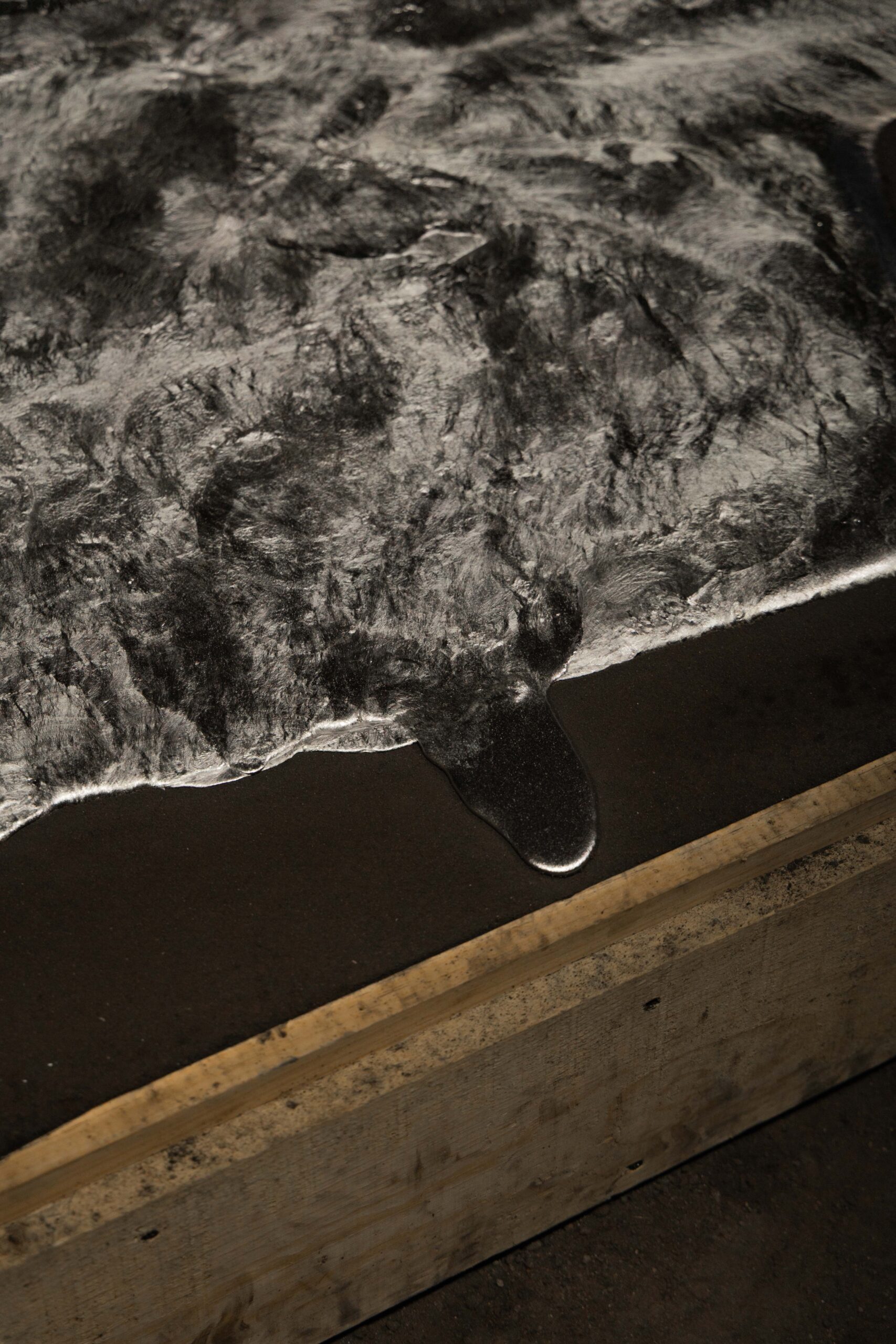
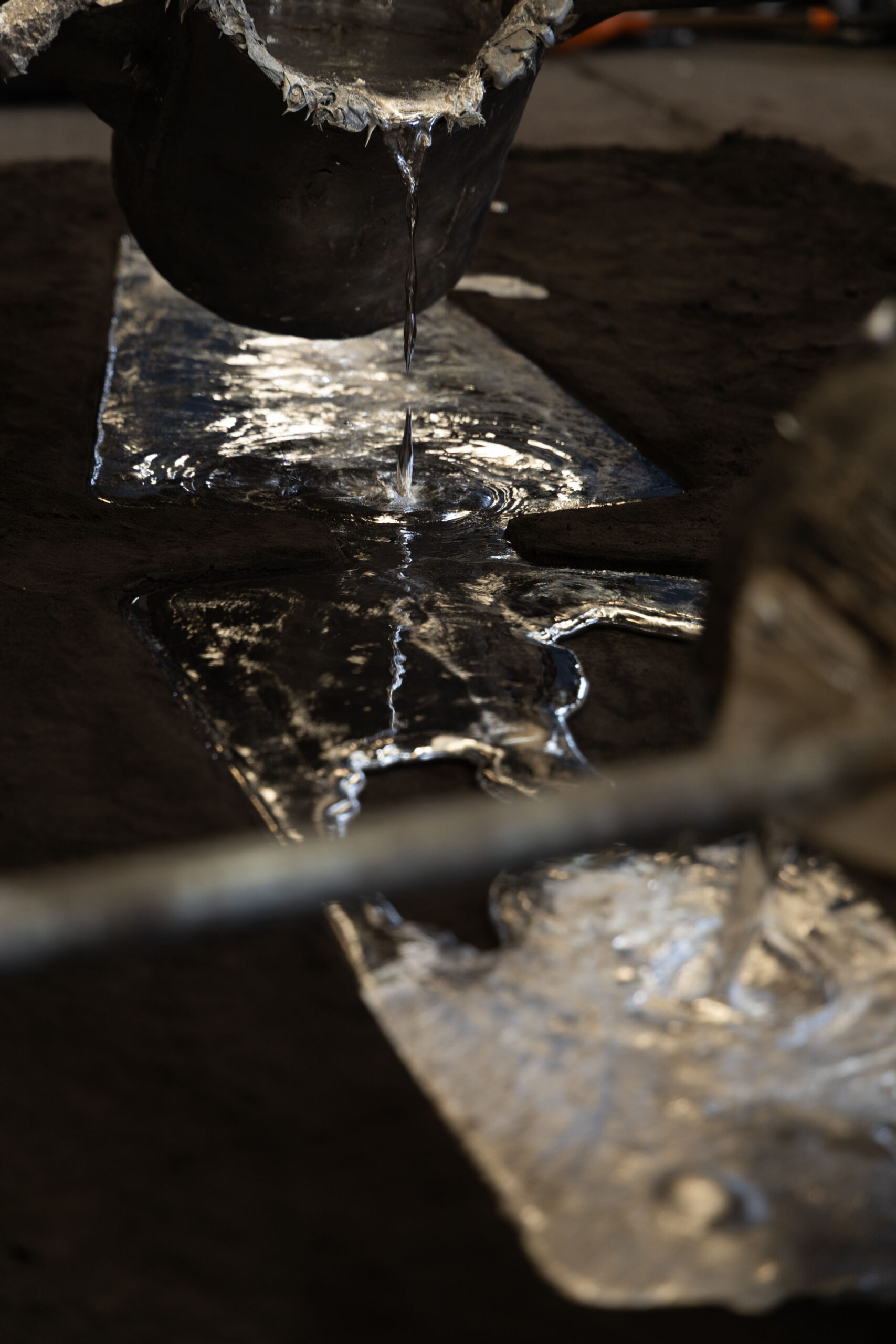
At EWE Studio, we are proud to incorporate these traditional techniques into our work and to highlight this artisanal legacy.
